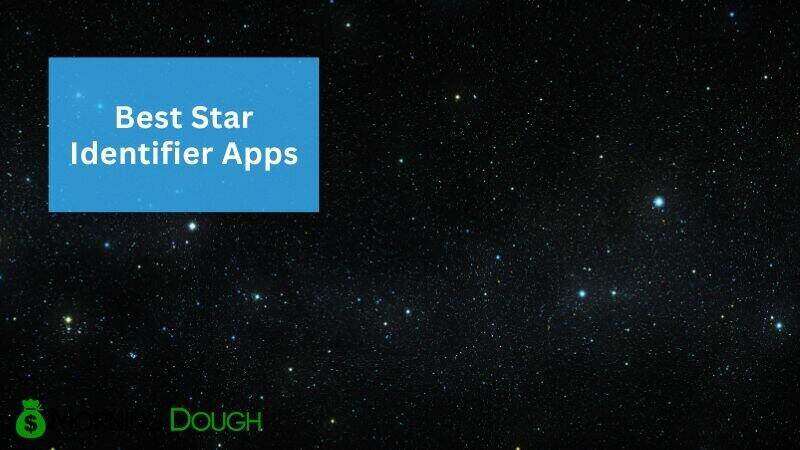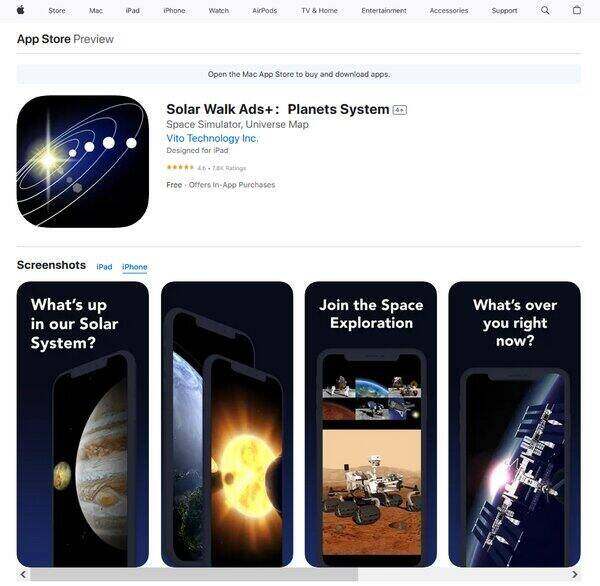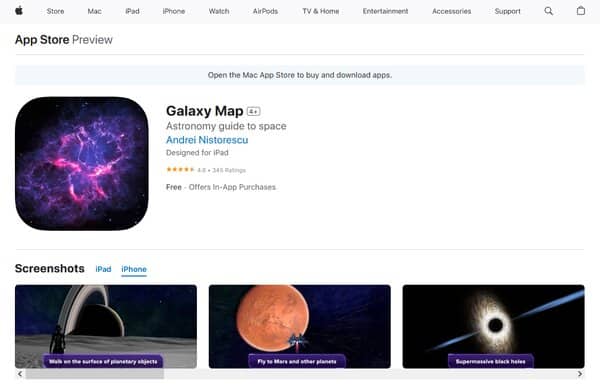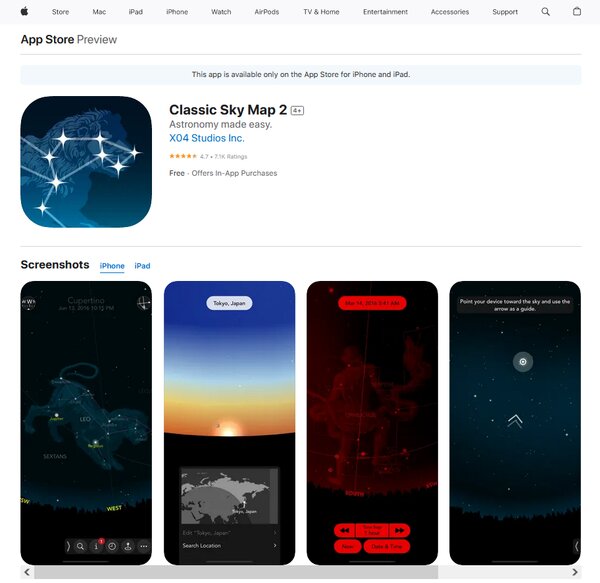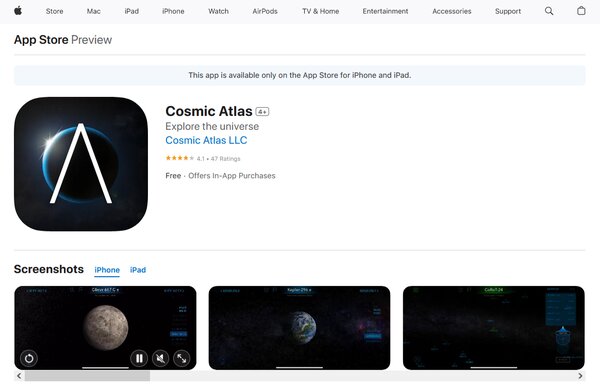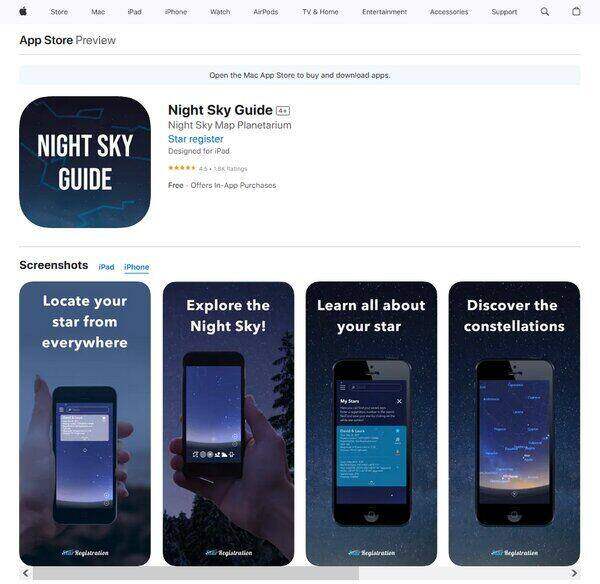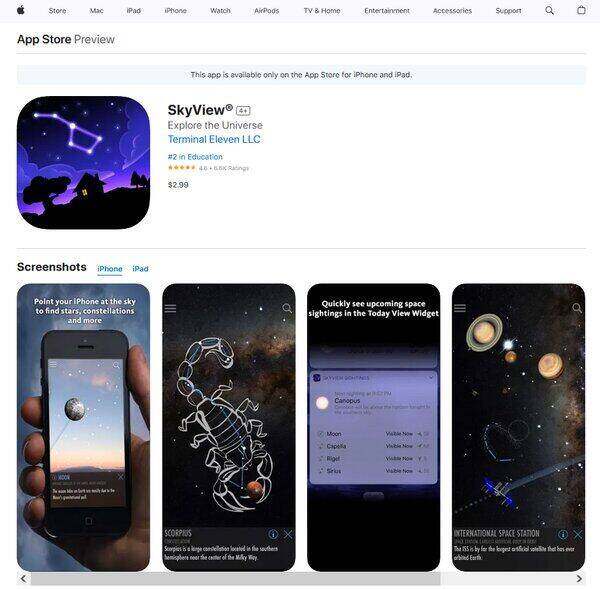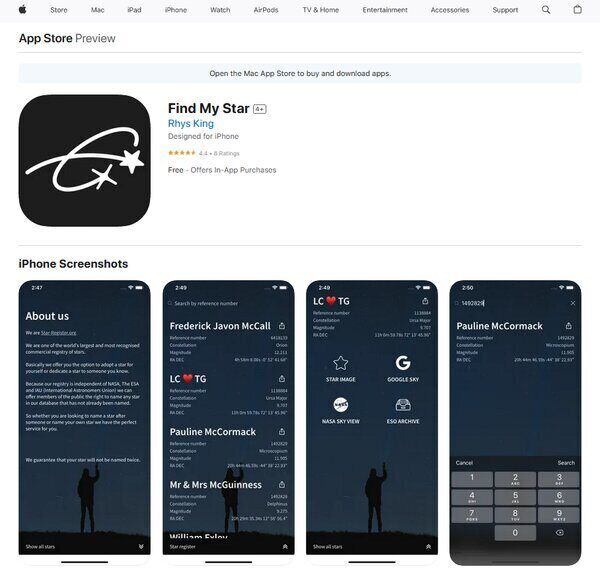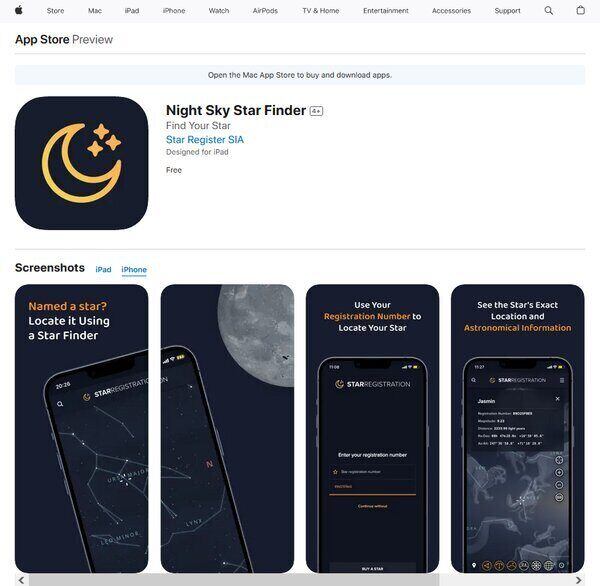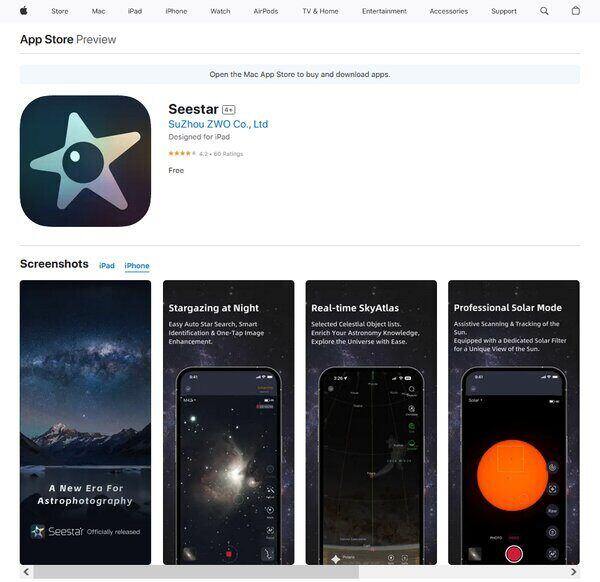9 Best Star Identifier Apps
Star Identifier App
Exploring the night sky has been a source of wonder and curiosity for humanity throughout history. With the advent of technology, the fascination with celestial bodies has only grown, leading to the development of applications that help us identify and learn more about the stars, planets, and constellations that light up the night sky. The star identifier app has become an essential tool for both amateur stargazers and professional astronomers alike.
The Need for Star Identifier App
The need for a star identifier app is multifaceted. For one, the natural human curiosity about the universe drives the demand for a tool that can demystify the night sky. With light pollution obscuring our view in many parts of the world, a star identifier app can help bring the cosmos closer, making it accessible even from the heart of a brightly lit city. These apps can instantly provide information about celestial objects that are otherwise invisible or indistinguishable to the naked eye.
For educators and parents, star identifier apps are invaluable in teaching children about astronomy, making education interactive and engaging. They can turn a simple stargazing session into an informative and memorable experience. For travelers and outdoor enthusiasts, these apps enhance the experience of adventure by allowing them to navigate and appreciate the sky from different parts of the world.
Moreover, the practical applications of these apps are significant. They can aid in planning astronomical events, observing meteor showers, tracking satellites, and even in astrophotography by helping photographers plan their shoots according to celestial events.
The market for astronomy apps is growing, driven by increasing demand and continuous technological advancements. These apps not only provide a gateway to the stars but also offer a platform for learning and discovery. They represent a convergence of science, education, and technology, packaged in a user-friendly interface that appeals to a wide audience.
In conclusion, the best star identifier app is one that not only satisfies the curiosity of the user but also provides educational value, enhances outdoor experiences, and serves as a practical tool for astronomical observation. As the market for these apps expands, the potential for innovation and learning continues to reach new heights, bringing the wonders of the universe to the palm of our hands.
9 Best Star Identifier Apps
- Solar Walk Planets System
- Galaxy Map
- Classic Sky Map
- Cosmic Atlas
- Night Sky Guide
- SkyView
- Find My Star
- Night Sky Star Finder
- Seestar
How does Star Identifier App work?
Star Identifier App is designed to make stargazing an accessible and educational experience for everyone. This app utilizes the GPS, compass, and gyroscope in your smartphone or tablet to pinpoint your exact location and the orientation of your device. When you hold your device up to the night sky, the app displays a star map based on your location, overlaying the image with names and information about the stars, planets, constellations, and other celestial bodies that are currently visible.
The apps often include augmented reality (AR) features that allow you to see the names and outlines of the celestial objects superimposed on the live view of the sky through your device’s camera. Some apps also let you select any date and time to see the past or future positions of stars and planets, which can be particularly useful for planning stargazing sessions or for educational purposes.
Many star identifier apps come with additional features such as 3D models of constellations, stories and mythology related to the stars, and information about astronomical events. They can also track satellites, including the International Space Station (ISS), and provide notifications about meteor showers and other notable occurrences in the sky.
How to choose a Star Identifier App?
Choosing the right Star Identifier App depends on your interests, level of expertise in astronomy, and what you hope to achieve with the app. Here are some parameters and features to consider:
Accuracy and Detail: The app should provide an accurate representation of the night sky. Look for apps that offer detailed and comprehensive databases of stars, planets, and deep sky objects.
Ease of Use: The user interface should be intuitive and easy to navigate, especially if you are a beginner or if you intend to use the app with children.
Features: Consider what features are important to you. Do you want AR capabilities? Are you interested in 3D models of constellations or information about the lore and history of the stars? Do you need the app to track satellites or inform you about upcoming astronomical events?
Customization: Some apps allow you to customize the experience by selecting different star maps, adjusting the brightness for night viewing, or setting up notifications for celestial events.
Educational Content: If you’re using the app for learning or teaching, look for apps that provide educational content such as stories about constellations, detailed information about celestial bodies, and news about astronomy.
Offline Functionality: If you plan to use the app in remote areas without internet access, check if the app works offline.
Hardware Requirements: Make sure the app is compatible with your device and does not require additional sensors that your device might lack.
Price: Some apps are free with ads, while others require a one-time purchase or subscription. Decide what you’re willing to spend and whether the free features meet your needs or if you’re willing to pay for premium features.
Reviews and Ratings: Look at the app reviews and ratings on the App Store or Google Play. User experiences can give you insight into the app’s performance and reliability.
Updates and Support: Check if the app is regularly updated and if the developer provides good customer support. Regular updates can mean improved features and bug fixes, enhancing the overall app experience.
By considering these factors, you can select a Star Identifier App that suits your needs and helps you explore the night sky with ease and enjoyment.
Best Star Identifier App
1. Solar Walk Planets System
Solar Walk Planets System is a star identifier app and an immersive 3D space simulator that offers users a detailed and interactive model of the solar system right at their fingertips. This star identifier app app is designed to bring the universe closer to individuals, allowing them to explore planets, satellites, moons, comets, and other celestial bodies anytime, anywhere. With its user-friendly interface, Solar Walk makes it easy for users of all ages to embark on a fascinating journey through space, providing a unique educational experience that combines learning with entertainment. Whether you’re a student, educator, or simply a space enthusiast, this app serves as a comprehensive guide to our solar system, offering a wealth of information that is both accessible and engaging.
What does Solar Walk Planets System do?
Solar Walk Planets System acts as a portable planetarium, transforming your device into a window to the cosmos. It allows users to navigate through the solar system in stunning 3D, offering up-close views of planets, their moons, and other space objects. The star identifier app not only visualizes the solar system in real-time, showing the accurate positions and movements of celestial bodies, but it also includes a time machine feature. This unique tool enables users to travel to the past or future to observe the solar system at different points in time. Additionally, Solar Walk provides detailed information on each planet and celestial body, including their composition, surface temperature, and history of exploration. Users can dive below the surface of planets to study their layers, play with different viewing angles, and even watch sunsets from Mars. The app also features a gallery of stunning space images and educational movies, making it an invaluable resource for anyone looking to deepen their understanding of space and astronomy.
Solar Walk Planets System Key Features
Interactive 3D Solar System Model: Solar Walk offers an interactive 3D model of the solar system, allowing users to explore space objects in great detail. This feature makes it easy to visualize the positions and movements of planets and their moons, providing a realistic representation of our cosmic neighborhood.
Time Machine: The app includes a time machine feature that lets users travel through time to see the solar system at any given moment in the past or future. This tool enhances the educational value of the app by showing how celestial bodies move and interact over time.
Detailed Information on Celestial Bodies: Solar Walk provides comprehensive information on each planet and other space objects, including their composition, surface features, and exploration history. This feature serves as an encyclopedia of the solar system, offering valuable insights into the characteristics and dynamics of celestial bodies.
Educational Movies and Image Gallery: The app contains a collection of educational movies and a gallery of high-resolution space images. These resources are designed to supplement the learning experience, providing users with visual aids that help explain complex astronomical concepts.
Real-Time Visualization: Solar Walk visualizes the solar system in real-time, accurately depicting the current positions and movements of planets and their moons. This feature allows users to observe celestial events as they happen, adding an element of immediacy to the exploration of space.
Surface Exploration: Users can zoom in on planets to explore their surfaces in high resolution, offering a closer look at features such as craters, mountains, and valleys. This capability provides a more immersive experience, making it feel as though users are actually visiting these distant worlds.
2. Galaxy Map
Galaxy Map is an interactive digital cosmos that offers users a unique opportunity to explore the vastness of the Milky Way, Andromeda, and their satellite galaxies. This star identifier app, designed with both the amateur stargazer and the seasoned astronomer in mind, leverages the latest in 3D technology to bring the universe closer to Earth. Users can navigate through the Orion Arm’s nebulae and supernovae, land on various planets, and even take control of a spacecraft for a more immersive experience. With imagery sourced from NASA and other leading space research institutions, Galaxy Map provides an accurate and visually stunning representation of outer space.
What does Galaxy Map do?
Galaxy Map serves as a gateway to the cosmos, enabling users to embark on a virtual journey across the universe from the comfort of their own devices. It allows exploration of celestial bodies within the Milky Way and Andromeda galaxies, offering detailed views of nebulae, supernovae, and other galactic phenomena. The star identifier app includes features for landing on planets, flying through their atmospheres, and exploring their surfaces in 3D. With an extensive database updated in real-time from authoritative space research sources, Galaxy Map educates and entertains by providing a wealth of information about the universe, its stars, planets, and other celestial objects.
Galaxy Map Key Features
Interactive 3D Galaxy Map: Users can navigate a three-dimensional representation of the Milky Way and Andromeda galaxies, exploring various celestial phenomena and structures.
Landing on Planets: The app offers the thrilling experience of landing on and exploring the surfaces of different planets and moons, providing a unique perspective on these distant worlds.
Spacecraft Simulation: Galaxy Map includes a spacecraft simulation feature, allowing users to pilot a spaceship through the galaxy, enhancing the exploratory experience.
Extensive Celestial Database: With data sourced from NASA, ESA, and other space missions, the app boasts an extensive database of stars, planets, moons, and other celestial bodies.
Real-Time Data Updates: Information on exoplanets and other celestial phenomena is updated daily, ensuring users have access to the latest discoveries and research findings.
Global Language Support: To cater to a worldwide audience, Galaxy Map offers support for over 100 languages, making it accessible to users from different linguistic backgrounds.
Educational Tool: Beyond entertainment, the app serves as an educational resource, providing detailed information about the cosmos, suitable for both classroom instruction and self-learning.
3. Classic Sky Map
Classic Sky Map is a star identifier app designed to bring the wonders of the night sky closer to amateur astronomers and stargazing enthusiasts. It serves as a digital guide to the stars, constellations, and celestial events, transforming the complex tapestry of the night sky into an accessible and enjoyable experience. With its user-friendly interface, Classic Sky Map caters to both the curious beginner and the seasoned sky watcher, offering a seamless blend of educational content and observational tools.
What does Classic Sky Map do?
Classic Sky Map acts as a portable planetarium, providing users with a real-time map of the stars and constellations overhead. By utilizing the device’s sensors, the app can accurately display the celestial bodies as they appear from the user’s location, adjusting for time and date. This interactive sky chart is not only a star identifier app for identification but also a means of education, offering insights into the lore and science behind the stars. Whether it’s tracking a specific star, learning about various constellations, or planning to observe a meteor shower, Classic Sky Map equips users with the knowledge to navigate the night sky with confidence.
Classic Sky Map Key Features
Real-Time Sky Mapping: Classic Sky Map provides an accurate representation of the night sky in real-time, using the device’s built-in sensors to align the star chart with the user’s current position and the visible celestial sphere.
Educational Content: The app includes detailed information about stars, constellations, and other celestial phenomena, making it a valuable resource for learning about astronomy and the stories behind the constellations.
User-Friendly Interface: Designed with ease of use in mind, the app allows even those new to stargazing to quickly become adept at identifying stars and constellations.
Customizable Settings: Users can tailor their stargazing experience by adjusting various settings within the app, such as the brightness of the star chart and the level of detail displayed.
Observation Planning: For those looking to observe specific celestial events, Classic Sky Map offers features that help plan the best times and dates to view meteor showers, eclipses, and other astronomical occurrences.
Portable Planetarium: As a mobile application, Classic Sky Map turns any smartphone or tablet into a portable planetarium, allowing users to enjoy the night sky from any location without the need for bulky equipment.
4. Cosmic Atlas
Cosmic Atlas is an innovative space exploration application that offers users an immersive experience of the cosmos. Designed for astronomy enthusiasts and casual stargazers alike, this star identifier app provides a detailed and interactive view of the Milky Way Galaxy. With its user-friendly interface, Cosmic Atlas allows for seamless navigation through thousands of exoplanets, stars, and systems, making the vastness of space more accessible than ever before.
What does Cosmic Atlas do?
Cosmic Atlas serves as a virtual telescope, bringing the wonders of the universe to the palm of your hand. This star identifier app enables users to explore an expansive 180 trillion square lightyears of the Milky Way, offering a unique opportunity to visit neighboring systems and exoplanets. The app also includes a personal catalog feature, where users can flag and keep track of their favorite celestial bodies from past explorations. Whether you’re an amateur astronomer or simply curious about the night sky, Cosmic Atlas provides a comprehensive tool for discovering and learning about the stars and planets that light up our galaxy.
Cosmic Atlas Key Features
Six Modes of Interstellar Travel and Examination: Cosmic Atlas features six distinct modes that cater to different aspects of space exploration. These modes enhance the user’s ability to travel through the galaxy, examine celestial bodies, and gain a deeper understanding of the cosmos.
Open-World Space Exploration: The app offers an open-world experience, allowing users to freely navigate and discover the intricacies of space without predefined paths, fostering a sense of adventure and personal discovery.
Detailed Data Availability: For those interested in the scientific details, Cosmic Atlas provides extensive data on stars and exoplanets. Users can choose to hide labels for stars without exoplanets or detailed data, customizing their exploration to focus on objects of particular interest.
Feedback/Bug Report Feature: Understanding the importance of user input, the app includes a feedback option within the main menu. This feature encourages users to report any bugs, issues, or incorrect information, contributing to the continuous improvement of the app.
Personal Catalog of Flagged Stars and Planets: Users can create a personal catalog of celestial bodies they have encountered during their explorations. This feature allows for easy revisiting and further study of specific stars and planets.
5. Night Sky Guide
Night Sky Guide is a star identifier app designed to enhance the stargazing experience for both amateur astronomers and casual sky watchers. It leverages augmented reality (AR) to provide a seamless and intuitive way to identify stars, planets, constellations, and other celestial bodies in the night sky. With its user-friendly interface, Night Sky Guide aims to make astronomy accessible to everyone, regardless of their prior knowledge or experience. The star identifier app’s AR feature allows users to simply point their device at the sky to receive real-time information about what they are seeing, bridging the gap between the wonders of the cosmos and the curiosity of the observer.
What does Night Sky Guide do?
Night Sky Guide is a star identifier app that serves as a digital planetarium in your pocket, offering a comprehensive and interactive guide to the night sky. By utilizing the camera and sensors on your smartphone or tablet, the app overlays detailed information about stars, planets, constellations, and satellites onto the live view of the sky. Whether you’re looking to identify a specific celestial object, track the movement of planets, or simply explore the stars from your backyard, the Night Sky Guide provides the tools and information you need. It also includes features such as time travel, allowing users to see how the sky looked in the past or will look in the future, and search functionality to find and learn about specific stars or celestial events.
Night Sky Guide Key Features
Augmented Reality (AR) Navigation: This feature transforms your device into a window to the cosmos. By pointing your device at the sky, the app overlays information about celestial bodies directly onto the live camera feed, making it easy to identify and learn about what you’re seeing.
Time Travel: With this feature, users can explore the night sky as it appeared in the past or will appear in the future. This is particularly useful for planning stargazing sessions or understanding celestial mechanics.
Search and Locate: This functionality allows users to search for specific stars, planets, constellations, or satellites. The app then guides the user to the location of these objects in the night sky, making it easy to find even the most elusive celestial bodies.
Customizable Sky Map: The app offers a customizable sky map that can be adjusted based on the user’s location, time, and date. This ensures that the sky map accurately reflects what is visible in the night sky from any location on Earth at any given time.
Educational Content: Night Sky Guide is packed with educational content about the stars, planets, constellations, and other celestial phenomena. This includes detailed descriptions, histories, and scientific facts, making it a valuable learning tool for users of all ages.
6. SkyView
SkyView is a stargazing star identifier app that has captivated the curiosity of over 3.2 million users worldwide. Designed for both novices and seasoned astronomers, it transforms your iPhone, iPad, or iPod into a portable planetarium. By simply pointing your device at the sky, SkyView effortlessly identifies stars, constellations, planets, and satellites, making the mysteries of the cosmos accessible to everyone. Its intuitive interface, combined with augmented reality (AR) technology, provides a seamless and educational sky-gazing experience, day, or night. This star identifier app has been recognized for its educational value, earning the title of Best Education App in the App Store Rewind 2011.
What does SkyView do?
SkyView demystifies the night sky, making stargazing an accessible and enlightening experience for users of all ages and backgrounds. Utilizing the camera on your iPhone, iPad, or iPod, it overlays information about the stars, planets, and constellations directly onto the live camera feed, allowing you to identify celestial objects with ease. Whether you’re tracing the path of the International Space Station or uncovering the names of the stars that form Orion’s Belt, SkyView offers a guided tour of the heavens. Its ability to operate without an internet connection means you can embark on your astronomical adventures from remote locations, be it the middle of the ocean or the peak of a secluded mountain.
SkyView Key Features
Augmented Reality (AR) Technology: SkyView utilizes AR to superimpose celestial information over the real sky as seen through your device’s camera, providing a dynamic and interactive stargazing experience.
Identification of Celestial Objects: Point your device at the sky, and SkyView identifies stars, constellations, planets, and satellites, offering detailed information about each.
No Internet Requirement: The app’s functionality does not depend on an internet connection, allowing for stargazing in the most remote locations.
Educational Content: Access detailed descriptions and historical information about celestial objects, enhancing your knowledge of the universe.
Customizable Viewing Options: Adjust settings to highlight specific types of celestial objects, making it easier to focus on what interests you most.
Night Mode: A red overlay protects your night vision, ensuring that your stargazing experience is comfortable in low-light conditions.
Social Sharing: Share your discoveries with friends and family through social media integration, spreading the wonder of the night sky.
Event Tracking and Notifications: Set reminders for celestial events, such as meteor showers and planet alignments, so you never miss out on these spectacular sights.
7. Find My Star
Find My Star is a star identifier app designed to bring the stars closer to individuals by allowing them to name a star in the sky. This unique service is provided by Star-Name-Registry, one of the world’s largest and most recognized commercial registries of stars. Unlike traditional astronomical databases, Find My Star operates independently of organizations like NASA, The ESA, and the International Astronomers Union, which enables it to offer a personalized star-naming service to the public. Whether the intention is to commemorate a special person or occasion, or simply to indulge in the wonder of the cosmos, Find My Star ensures that each star is uniquely named, guaranteeing that no two stars share the same designation. This app not only offers a distinctive gift idea but also a memorable way to connect with the universe.
What does Find My Star do?
Find My Star transforms the abstract concept of star naming into a tangible and interactive experience. By providing users with the opportunity to adopt a star for themselves or dedicate it to someone special, the star identifier app creates a personal connection between individuals and the vast expanse of the night sky. Once a star is named through Find My Star, users can utilize the app to locate their star in the sky, view its details such as coordinates and constellation, and even receive a star map in PDF format for a small fee. This service is particularly appealing for those looking to give a unique and lasting gift, as it immortalizes the chosen names in the celestial realm. The app’s user-friendly interface and additional features, such as minor fixes and improvements for enhanced performance, make the star-naming journey accessible and enjoyable for all.
Find My Star Key Features
Personalized Star Naming: Find My Star offers the unique service of naming a star in the sky, allowing users to personalize their celestial experience or dedicate a star to someone special.
Independent Registry: Operating independently of major astronomical organizations, the app provides a distinct and recognized commercial registry, ensuring that each star named is unique and not duplicated.
Star Map in PDF: For a nominal fee, users can obtain a PDF star map, enhancing the star-naming gift with a visual representation of the star’s location in the cosmos.
User-Friendly Interface: The app is designed with a straightforward and intuitive interface, making it easy for users to navigate and engage with the star-naming process.
Regular Updates: Find My Star is committed to improving user experience through minor fixes and enhancements, ensuring the app stays up to date with current requirements.
Accessibility: Available on multiple platforms, including iOS and Android, the app ensures that a wide audience can access its services and enjoy the unique experience of naming a star.
Customer Satisfaction: With positive reviews and feedback, Find My Star prides itself on delivering a service that brings joy and satisfaction to its users, making it a memorable way to connect with the universe.
8. Night Sky Star Finder
Night Sky Star Finder is a star identifier app designed to bring the cosmos to your fingertips, allowing users to locate and identify stars in the night sky with ease. Tailored for those who have registered stars through starregistration.net, this app offers a personalized astronomical experience by integrating Augmented Reality (AR) technology. Whether you’re a seasoned stargazer or a newcomer to the wonders of the night sky, Night Sky Star Finder provides a user-friendly platform to explore celestial bodies and constellations from your current location.
What does Night Sky Star Finder do?
Night Sky Star Finder serves as a virtual guide to the heavens, enabling users to find their registered stars using a unique registration number. By leveraging the device’s location services and AR capabilities, the star identifier app presents a customized view of the night sky, reflecting the user’s immediate surroundings and the current time. It simplifies the process of star identification and offers a shareable experience, allowing users to send images of the sky and their located stars to friends and family. Additionally, the star identifier app includes features to discover nearby celestial objects, constellations, and the visible stars of the night, enhancing the overall stargazing journey.
Night Sky Star Finder Key Features
Augmented Reality Mode: This feature allows users to superimpose the star map onto their real-world view, providing an immersive experience in locating and identifying stars.
Personalized Sky View: The star identifier app customizes the night sky display based on the user’s location and local time, ensuring an accurate representation of the stars overhead.
Shareability: With just a click, users can share the view of their star or the night sky with friends and family, making it a social experience.
Discover Section: This section of the app offers insights into celestial objects near the named star, visible constellations, and stars in the user’s area, along with artistic representations of constellation shapes.
Special Features: Night Sky Star Finder includes additional tools such as landscape mode for horizon views, atmosphere mode to visualize light pollution, and grid overlays for a more detailed understanding of the sky’s layout.
9. Seestar
Seestar is an innovative star identifier app designed to enhance the experience of astronomy enthusiasts and astrophotographers alike. It serves as a bridge between the celestial wonders and the users, enabling them to explore, observe, and capture the beauty of the universe with ease. The star identifier app is tailored to work seamlessly with the Seestar device, a multifunctional tool that combines the capabilities of an altazimuth mount, telescope, and camera. This integration allows users to embark on their stargazing journey with minimal setup and without the need for professional guidance. Seestar stands out by offering a user-friendly platform where the vastness of the night sky becomes accessible with just a tap on the screen.
What does Seestar do?
Seestar transforms the complex world of astrophotography into an accessible hobby for everyone. By connecting to the Seestar device wirelessly, users can automatically locate and focus on celestial objects, making the stargazing experience both educational and enjoyable. The star identifier app includes a variety of modes tailored to different astronomical interests, such as Planetary Mode for observing planets and Solar Mode for tracking the sun with a solar filter. Additionally, Seestar enriches the user experience by providing a Real-Time Sky Atlas and a database filled with astronomical knowledge. It also encourages community engagement through its feature that allows users to share their astronomical discoveries and images with enthusiasts worldwide.
Seestar Key Features
Wireless control: This feature enables users to connect and control the Seestar device remotely, offering flexibility and convenience in exploring the night sky.
Stargazing Mode: Automatically locates and focuses on celestial objects, simplifying the process of identifying and observing stars and other astronomical phenomena.
Planetary Mode: Specifically designed for observing planets, this mode enhances the viewing experience by optimizing settings for planetary observation.
Solar Mode: With the inclusion of a solar filter, users can safely observe and track the sun, capturing its unique features without risking damage to their eyes or equipment.
Real-Time Sky Atlas: A built-in database of celestial objects and an astronomical encyclopedia that provides users with valuable information and helps them plan their observation sessions.
Stargazing Index and Recommendations: Keeps users informed about popular astronomical events and forecasts, making it easier to plan stargazing activities.
Scenery Mode: Allows manual control over the telescope’s direction and autofocus, enabling users to observe not just celestial objects but also terrestrial landscapes and wildlife.
Community Sharing: Encourages users to share their astronomical observations and images with a global community of astronomy enthusiasts, fostering a sense of connection and shared discovery.
FAQs on Star Identifier App
What is a Star Identifier App?
A Star Identifier App is a mobile application designed to help users identify stars, planets, constellations, and other celestial bodies in the night sky. By utilizing the camera on a smartphone or tablet, these apps can overlay information about what you’re seeing onto the live view of the sky. Some apps also offer augmented reality (AR) features, allowing for a more immersive experience. Users can simply point their device at the sky, and the app will use the device’s sensors along with astronomical data to identify and provide information about celestial objects in view. These apps often include additional features such as constellations’ mythology, detailed star charts, and notifications about astronomical events.
How do Star Identifier Apps work?
Star Identifier Apps work by using the device’s GPS, compass, and clock to determine the user’s exact location, orientation, and the current time. With this information, the app calculates which stars, planets, and constellations should be visible from that location at that time. When the user points their device at the sky, the app matches the live view with its internal star map to identify celestial objects. Some apps also use augmented reality (AR) to overlay constellation patterns and names directly onto the live sky view, making it easier for users to visualize and learn about what they are seeing. Advanced features may include tracking the International Space Station (ISS), identifying satellites, and providing detailed information about each celestial body.
What are the benefits of using a Star Identifier App?
Using a Star Identifier App offers several benefits, especially for amateur astronomers and anyone interested in learning more about the night sky. These apps make it easy to identify stars, planets, and constellations without needing a physical star chart or extensive astronomical knowledge. They can enhance educational experiences by providing instant access to a wealth of information about celestial objects, including scientific facts, history, and mythology. For photographers and stargazers, these apps can help plan observations by showing the position of objects at any given time. Additionally, the AR features in some apps offer an engaging way to visualize the night sky, making astronomy more accessible and enjoyable for people of all ages.
Can Star Identifier Apps replace traditional telescopes?
While Star Identifier Apps provide a convenient and informative way to explore the night sky, they cannot fully replace traditional telescopes. Telescopes offer greater magnification and the ability to see more distant and faint objects that are not visible to the naked eye or through a smartphone camera. However, these apps can complement telescope use by helping users locate objects in the sky before viewing them through a telescope. They can also provide additional information and context about the objects being observed, enhancing the overall stargazing experience. For casual observers and those just beginning to explore astronomy, Star Identifier Apps can be a valuable tool for learning and discovery.
Conclusion
Star Identifier Apps have revolutionized the way we connect with the cosmos, making astronomy more accessible to everyone. By combining technology with the ancient practice of stargazing, these apps offer a bridge between the past and the future, allowing users to explore the universe from the palm of their hands. Whether you’re an amateur astronomer, an educator, or simply someone who marvels at the beauty of the night sky, a Star Identifier App can enhance your understanding and appreciation of the stars above. With features ranging from identifying celestial bodies to providing educational content and AR experiences, these apps open up a world of discovery, making every night a potential adventure into the depths of space.
